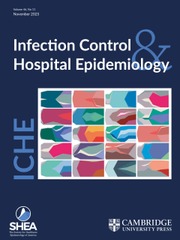No CrossRef data available.
Article contents
The life cycle of infection prevention and antimicrobial stewardship projects and interventions: the dynamic interplay of implementation and de-implementation science (Part I of II)
Published online by Cambridge University Press: 10 September 2025
Abstract
In Antimicrobial Stewardship and Infection Prevention and Control, programmatic goals often strive to achieve clinical benefit by practice change in the direction of doing less. Practically, this may include reducing the number of tests ordered, encouraging shorter and more narrow courses of antimicrobials, or discontinuing practices that are no longer contextually appropriate. Because promoting practice change in the direction of doing less is a critical aspect of day-to-day operations in Antimicrobial Stewardship and Infection Prevention and Control, the goals of this Society for Healthcare Epidemiology Research Committee White Paper are to provide a roadmap and framework for leveraging principles of implementation and de-implementation science in day-to-day practice. Part II of this series focuses on some practical case studies, including real-world examples of applied de-implementation science to promote discontinuation of practices that are ineffective, overused, or no longer effective.
Information
- Type
- SHEA White Paper
- Information
- Copyright
- © The Author(s), 2025. Published by Cambridge University Press on behalf of The Society for Healthcare Epidemiology of America


